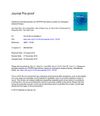Non-Viral Delivery of the CRISPR/Cas System: DNA Versus RNA Versus RNP
January 2022
in “
Biomaterials Science
”
CRISPR/Cas system plasmid DNA RNA Cas9 ribonucleoproteins RNPs non-viral delivery systems polymeric systems lipidic systems inorganic systems bio-derived vesicles protein-based systems ultrasound-activated microbubble nanoliposome androgenic alopecia gene knockout hair growth recovery CRISPR pDNA RNP microbubble hair loss hair regrowth

TLDR RNA delivery is best for in-body use, while RNP delivery is good for outside-body use. Both methods are expected to greatly impact future treatments.
The document discusses the non-viral delivery of the CRISPR/Cas system in three formats: plasmid DNA (pDNA), RNA, and Cas9 ribonucleoproteins (RNPs). Each format has its own advantages and challenges, such as stability, onset of protein expression, and potential immunogenicity. Currently, RNA delivery is the most promising strategy for in vivo applications, while RNP delivery is gaining attention for ex vivo applications. The document also discusses various non-viral delivery systems, including polymeric, lipidic, inorganic, bio-derived vesicles, and protein-based systems. These systems have shown efficient delivery and gene editing capabilities in various disease models. Notably, an ultrasound-activated microbubble conjugated nanoliposome was used for the therapy of androgenic alopecia, resulting in efficient gene knockout and subsequent hair growth recovery. The document concludes that research on RNA and RNP delivery will likely continue to increase extensively with high impact on future therapies.

